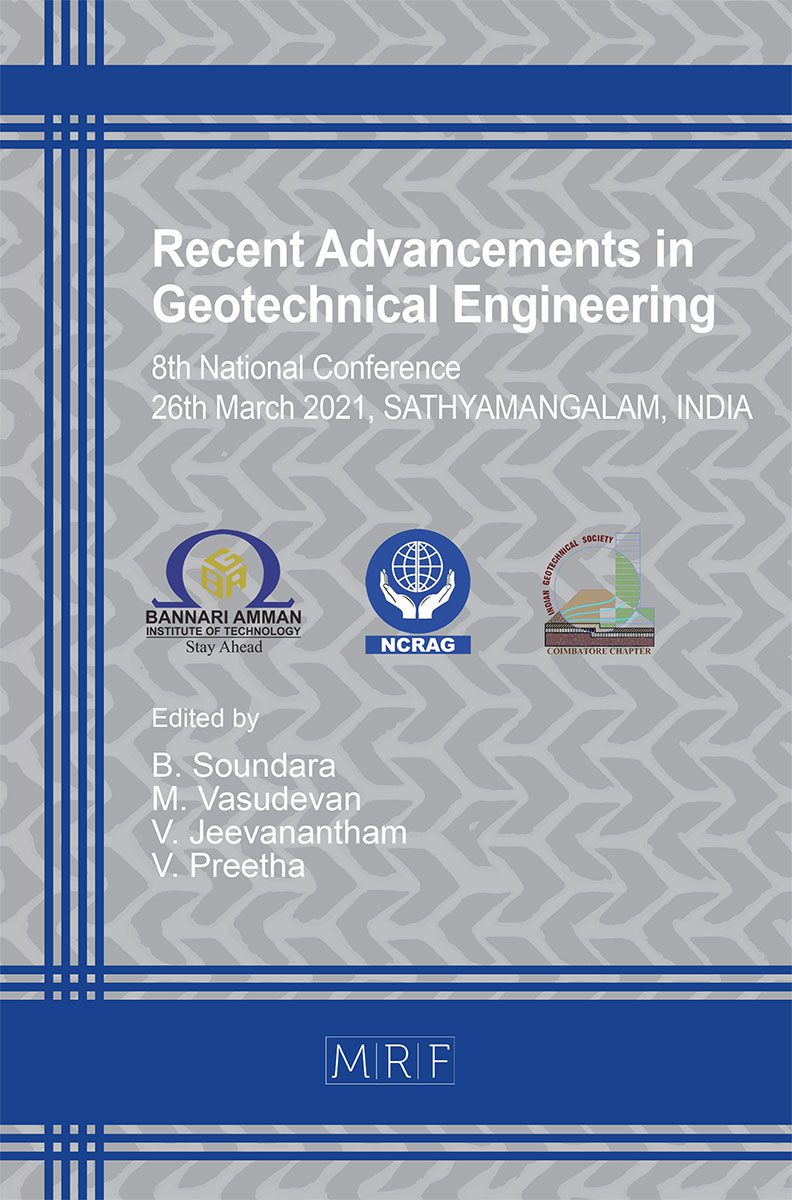Investigation of Eco – Friendly Interlocking Masonry Units
M. Veerapathran, S. Arnesh, M. Kishore Kumar, S. Rakeshwaran, A. Sarankarthi
download PDFAbstract. This project reveals about the detailed investigation of eco-friendly interlocking masonry units. Interlocking between individual units is enabled by providing grooves, male and female joint on them. Hence less mortar is required for construction of masonry units while using these interlocking bricks. Various trails and tests will be conducted on these interlocking bricks by addition of various materials such as E-wastes, coir pith and saw dust in clay soil. Hence the cost of these masonry units will be reduced. All these various mixtures are mixed at different proportions and ideal mixture are to be found then the grooves are to be altered by male and female joints. Further in addition of clay and sand, wooden powder and coir pith are to be added so that while burning of these masonry units results in good colour and more strength (35% improved strength while comparing to an A-Class brick). Optimum ratio with minimal cost and max efficiency with sustainability to the environment is recommended to the market. In the past year there was a spread of pandemic COVID 19. Precautious measures are taken to avoid the spread of this pandemic. By considering this situation a chemical is to be added in this masonry unit which will be acting as an disinfectious agent which will avoid the entry of various common viruses and bacteria like rhino viruses, salmonella. This ability of the masonry unit will last more than 24 months and beyond. And this can also be replenished after specific period of time. These masonry units have less mortar consumption (70% less mortar consumption while comparing to an A-Class brick), more workability, disinfectious and accommodates waste materials. Hence it is considered to be eco-friendly and sustainable.
Keywords
Masonry Units, Interlocking Bricks, Soil, Male and Female Joints
Published online 8/15/2021, 5 pages
Copyright © 2021 by the author(s)
Published under license by Materials Research Forum LLC., Millersville PA, USA
Citation: M. Veerapathran, S. Arnesh, M. Kishore Kumar, S. Rakeshwaran, A. Sarankarthi, Investigation of Eco – Friendly Interlocking Masonry Units, Materials Research Proceedings, Vol. 19, pp 161-165, 2021
DOI: https://doi.org/10.21741/9781644901618-20
The article was published as article 20 of the book Recent Advancements in Geotechnical Engineering
![]() Content from this work may be used under the terms of the Creative Commons Attribution 3.0 licence. Any further distribution of this work must maintain attribution to the author(s) and the title of the work, journal citation and DOI.
Content from this work may be used under the terms of the Creative Commons Attribution 3.0 licence. Any further distribution of this work must maintain attribution to the author(s) and the title of the work, journal citation and DOI.
References
[1] Shivakumar. K et.al., Limestone Dust and Wood Saw As a Brick Material, International Journal of Engineering Trends and Application (IJETA) Vol.5 Issue 2 (2008).
[2] Amin Al-Fakih et.al., Development of Interlocking Masonry Bricks and its’ Structural Behaviour, A Review Paper IOP Conf. Series: Earth and Environmental Science 140 (2018). https://doi.org/10.1088/1755-1315/140/1/012127
[3] Emmanuel Nana Jackson et.al.,Comparative cost analysis between interlocking bricks and sandcret blocks for residential buildings, Ghana MedCarve World of Research Vol.4 Issue 4(2018). https://doi.org/10.15406/mojce.2018.04.00120
[4] Dipakphapale et.al., Fly ash interlocking brick geo polymer concrete, International Research Journal of Engineering and Technology (IRJET) Vol.07 Issue 03 (2020).
[5] Simion Hosea Kintingu, Design of Interlocking Bricks for Enhanced Wall Construction Flexibility, Alignment Accuracy and Load Bearing, A thesis submitted to The University of Warwick, School of Engineering (2000).
[6] S.V. GiriBabu and Dr. S. Krishnaiah, Manufacturing of Eco-Friendly Brick: A Critical Review, International Journal of Computational Engineering Research (IJCER) Vol.08, Issue 02 (2018).
[7] Halima Chemani and BachirChemnai, Valorization of wood sawdust in making porous clay brick, Academic journals Vol.8, Issue 15,(2013) pp 609 – 614.
[8] Kiel Industries Germany, Airdal User guide: Ideal protection against viruses and bacteria, (2010).
[9] PeriRaghava Ravi Teja, Studies on Mechanical Properties of Brick Masonry, A thesis submitted to National Institute of Technology Rourkela, (2015).












